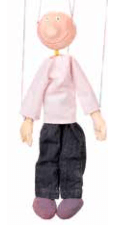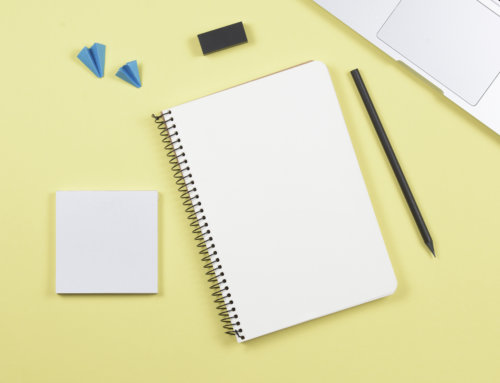The Master of Pages is Pulling Your Strings!
OR: Is this going to twist my mind or smash my dreams?
 The answer to that question is obviously no since Master Pages are beautiful things when used correctly. Specifically, we’re going to cover how to set up a master page so that your page numbers and slug lines don’t end up behind backgrounds or photos.
The answer to that question is obviously no since Master Pages are beautiful things when used correctly. Specifically, we’re going to cover how to set up a master page so that your page numbers and slug lines don’t end up behind backgrounds or photos.
Why bother? you might be asking yourself, when I can just copy/paste that stuff on every page.
It’s true that the copy/paste method is acceptable. The drawback is that it’s much easier to accidentally move or shift those elements and not even be aware of it. Besides, who wants to copy/paste page numbers and slug lines 48 times? Or a few hundred times? The solution? Use Master Pages!
That’s great, I can hear you saying, but the second I place a photo that bleeds off the bottom of one of my pages, it covers up my page number because objects on a master page layer always appear behind objects assigned to the same layer on a page. So what’s the point of using a Master Page? For an investment of about an extra ten seconds, you can set up your Master Page so that doesn’t happen.
Master Pages Setup
With your InDesign file open, go to Window > Pages. Click the triangle in the upper right corner of the Pages window that pops up and select New Master. Here’s where you give your Master Page a letter designation and a name. Use something that makes sense to speed up applying the Master as you build your document.
Once you click OK, you’ll be on the new Master Page you’ve created. Now go ahead and create your page numbers and slug lines and format them. Let’s assume you’re going to use Automatic Page Numbering as well, because you’re a time-saving genius.
On your Master Page, highlight your page number. Go to Type > Insert Special Character > Markers > Current Page Number. If your new Master Page is “B,” your page number will now be a “B,“ too. Do this on both pages of your Master.
Open up the Layers palette by going to Window > Layers. Create a new layer and call it something brilliant like “Page Numbers Black.” Make sure this new layer is at the top of the Layers list. Do a Select All on your Master Page. Cut. Activate your Page Number layer by clicking on it. Go to Edit > Paste in Place.
And there you have it! Your page numbers and slug lines are now on the top layer and will appear in front of any photos or backgrounds you create in your publication as long as those items are on a lower layer.
Now you can go a bit crazy. Duplicate this Master and make the page numbers and slug lines white. You can use this Master on pages where you will have dark backgrounds. Feel free to put other elements on these Masters as well. Maybe side bars that will appear throughout or a web address. You’ll never go back to copy/paste after this.
One note: stacking order is separate from Layers. Objects within a single layer have their own stacking order which determines what appears in front for that layer.
If you have questions about using layers on Master Pages, please contact us!


